We have all seen one of these: a grave marker worn into anonymity by time and weather. But this one was special. It was carved by William H. Morris (1777-1874) and I had to know who it was for.
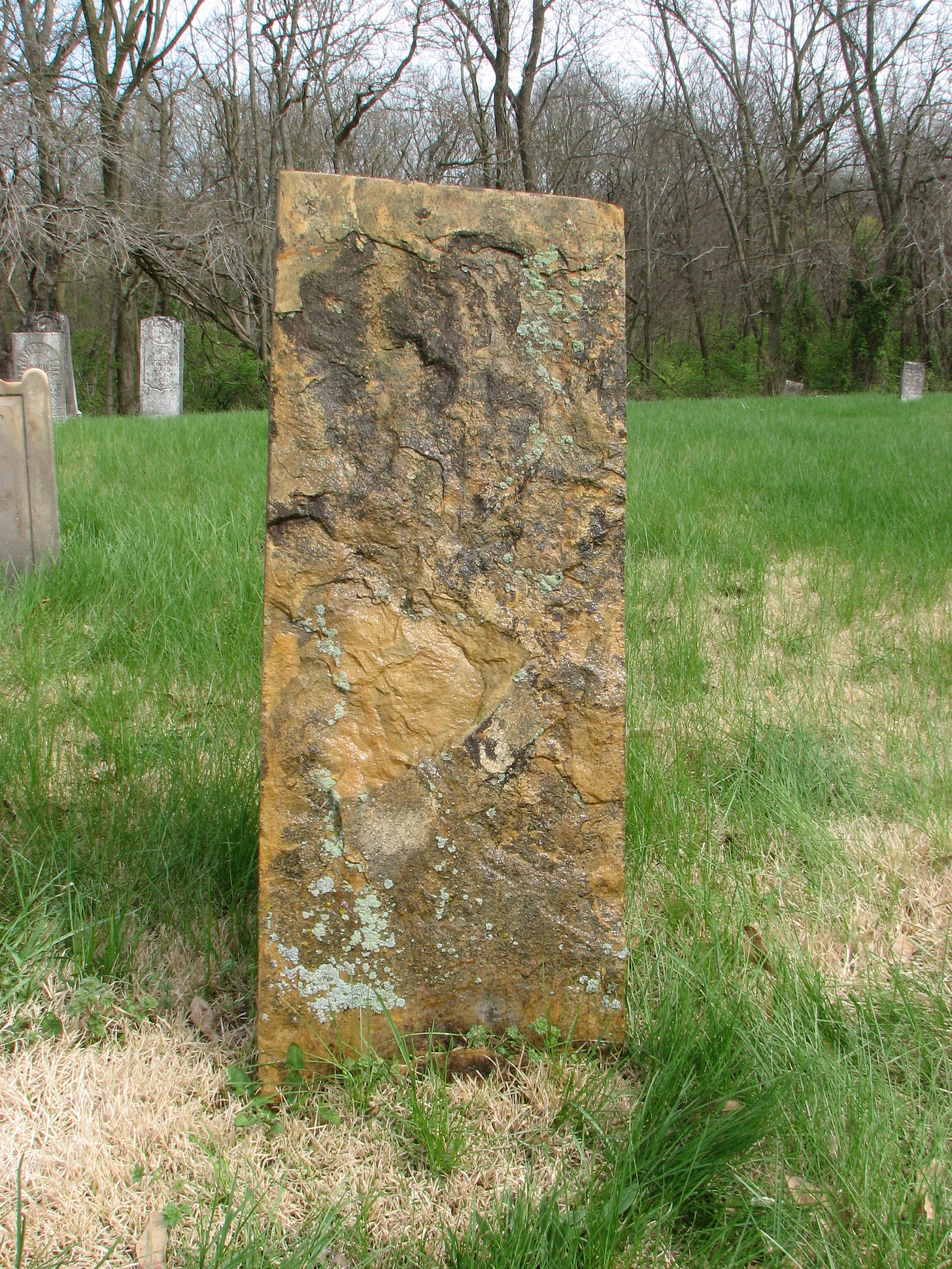
I confess I am a fan of the “forensic police show” genre. The endless minutiae of detective work holds a fascination for me, following along in a 60 minute episode as the brilliant detective and his equally brilliant lab experts step by step close in on the diabolical serial killer. If you are a fan also and haven’t seen Mind Hunters,1 you simply must. My face to face interaction with an actual serial killer maybe has something to do with this.2 They are real. They are not just on television. Now back to the story.
A year earlier I had connected with a 4th cousin through autosomal DNA testing. Carole was living in Europe at the time and I reside here in Illinois, some 4,300 miles distant. But, we found we were researching the same family lines, and so began sharing our work. Carole, is a librarian and I a retired stock broker academically trained in archaeology. An unlikely research team, but it worked. Carole’s disciplined deductive approach and my intuitive inductive leaps complemented each other in unexpected ways. In a great stroke of luck Carole retired and moved back to the states to be near her children and grandchildren. She would now be within driving distance of Union Cemetery and the mystery stone.
Start with what you know.
First principles, Clarice: simplicity. Read Marcus Aurelius, "Of each particular thing, ask: What is it in itself? - Hannibal Lecter
The marker itself measured 36 inches tall (height above ground), 2 3/4 inches thick and 14 inches wide. This implied an estimated weight of 148 pounds. Sandstone weighs 123-150 pounds per cubic foot, so it is easy math to convert volume to weight.3 The sandstone itself is shale like and fits the description of locally found Palestine Sandstone. The front facies or layer had delaminated completely and we could observe further delamination in progress. In addition the marker was leaning and obviously broken. The condition of its footing or base was yet unknown, being underground.
The size, shape, weight and physical characteristics placed it firmly within the group of similar markers known to have been made by William H. Morris.4 Morris only worked in local Palestine Sandstone. Only one other unknown professional carver used Palestine Sandstone and his inscriptions were noticeably different from the amateurish work of Morris. But the inscription is gone.
“Of course it's very hampering being a detective, when you don't know anything about detecting, and when nobody knows that you're doing detection, and you can't have people up to cross-examine them, and you have neither the energy nor the means to make proper inquiries; and, in short, when you're doing the whole thing in a thoroughly amateur, haphazard way.” - A.A. Milne, The Red house Mystery.
Proximity equals propinquity.
Proximity equals propinquity is a well known axiom of archaeology. The meaning is that artifacts found in close proximity likely have some sort of functional or symbolic connection; an intimate association in some unknown context. The job of the investigator is to find the connection.
Our mystery marker was at the end of a row inhabited by members of the Hawthorn (Hathorn, Hawthorne ) family. Their sad plight was discussed earlier in my Serengenity article, Cause of Death. So, we speculate that our mystery person was somehow related to the Hawthorn family and his grave marker was likely carved by William H. Morris. From the genealogy records we also know that Morris’s sister Mary (Polly) married David Hathorn. Of the known Morris markers, many of them were for in-law relationships. Morris was an active stone carver between 1834 and 1860. So far all of this fits.
Get the shovel. We are going to dig.
The first time you stand in a cemetery with shovel in hand ready to plunge into the soil, there is an instinctive hesitation; a quickening of the blood. I had to remind myself that we had both moral and legal authority to repair, conserve and remediate damaged grave markers here.5 The decision to excavate and repair the mystery marker was twofold. The marker itself was leaning at sufficient angle to be a hazard to itself as well as the mowing crew. But we also hoped to find clues as to its owner.
The digging itself was conducted using basic archaeological technique. The soil was removed from around the marker and screened through a 1/2 inch galvanized mesh. For about $50 with wood, epoxy, mesh and two bolts, we had a presentable “shaker screen.” One person holds the screen and shakes while the other shovels dirt into the screen. A plastic drop cloth catches the screened soil.
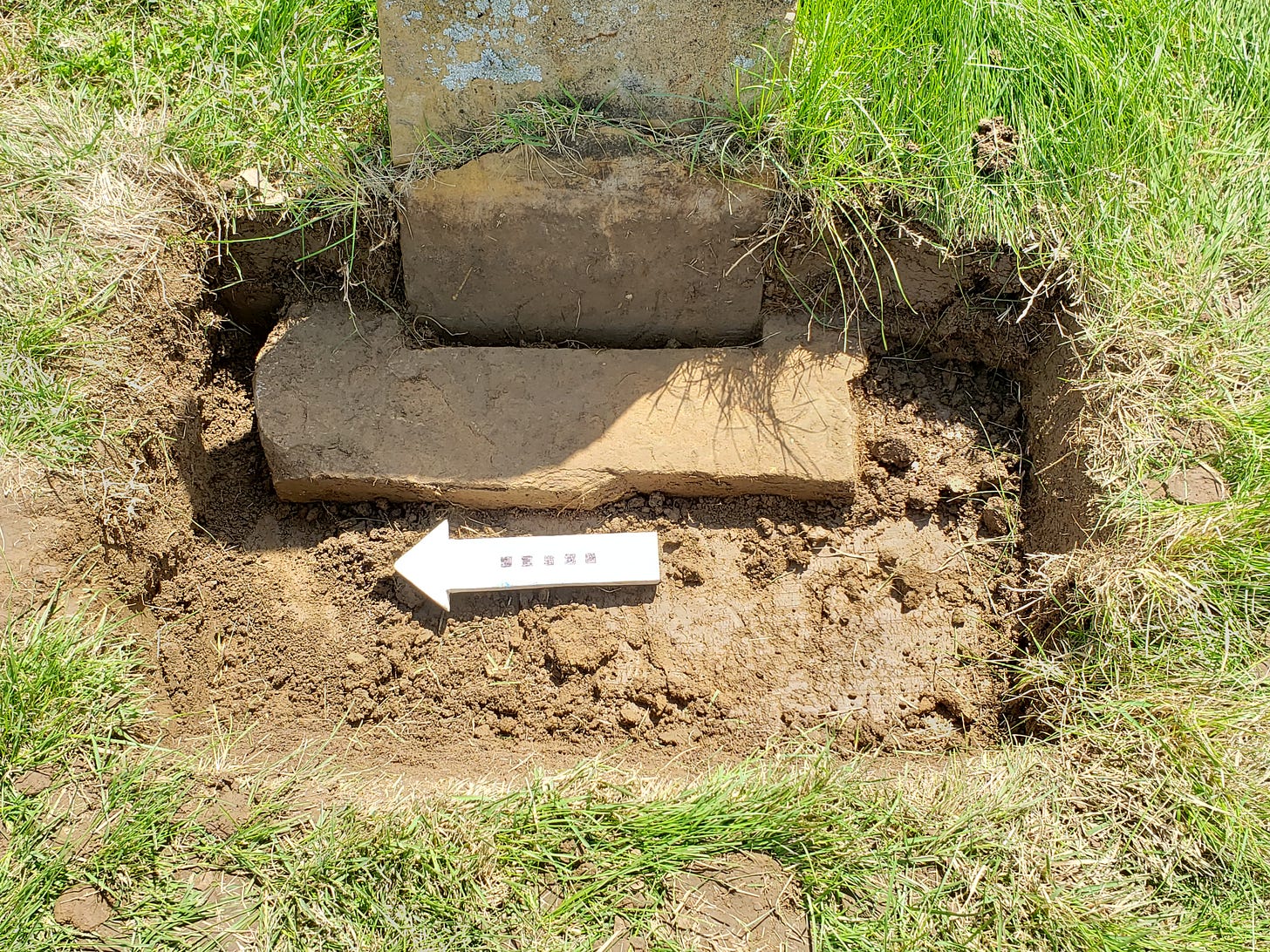
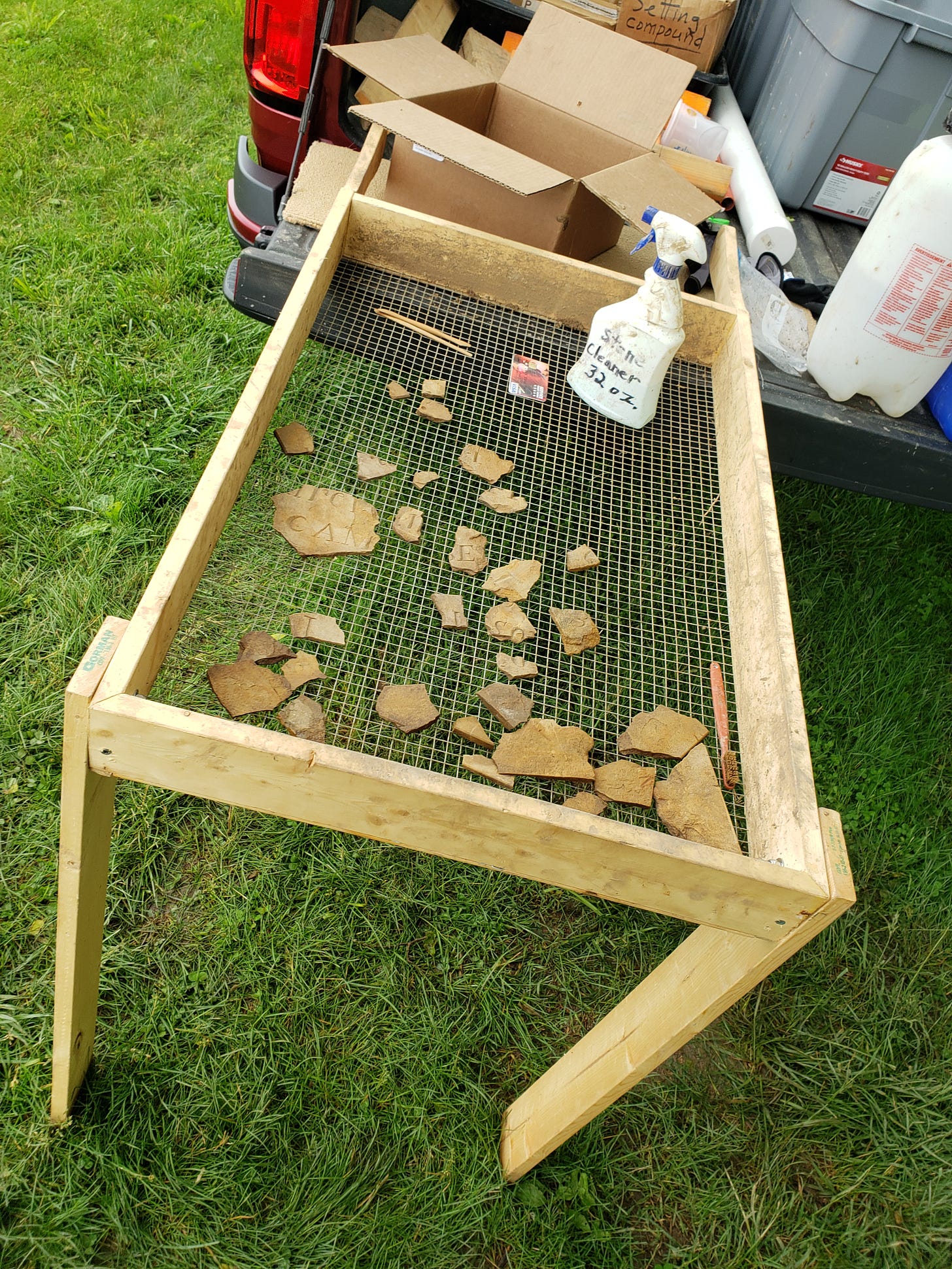
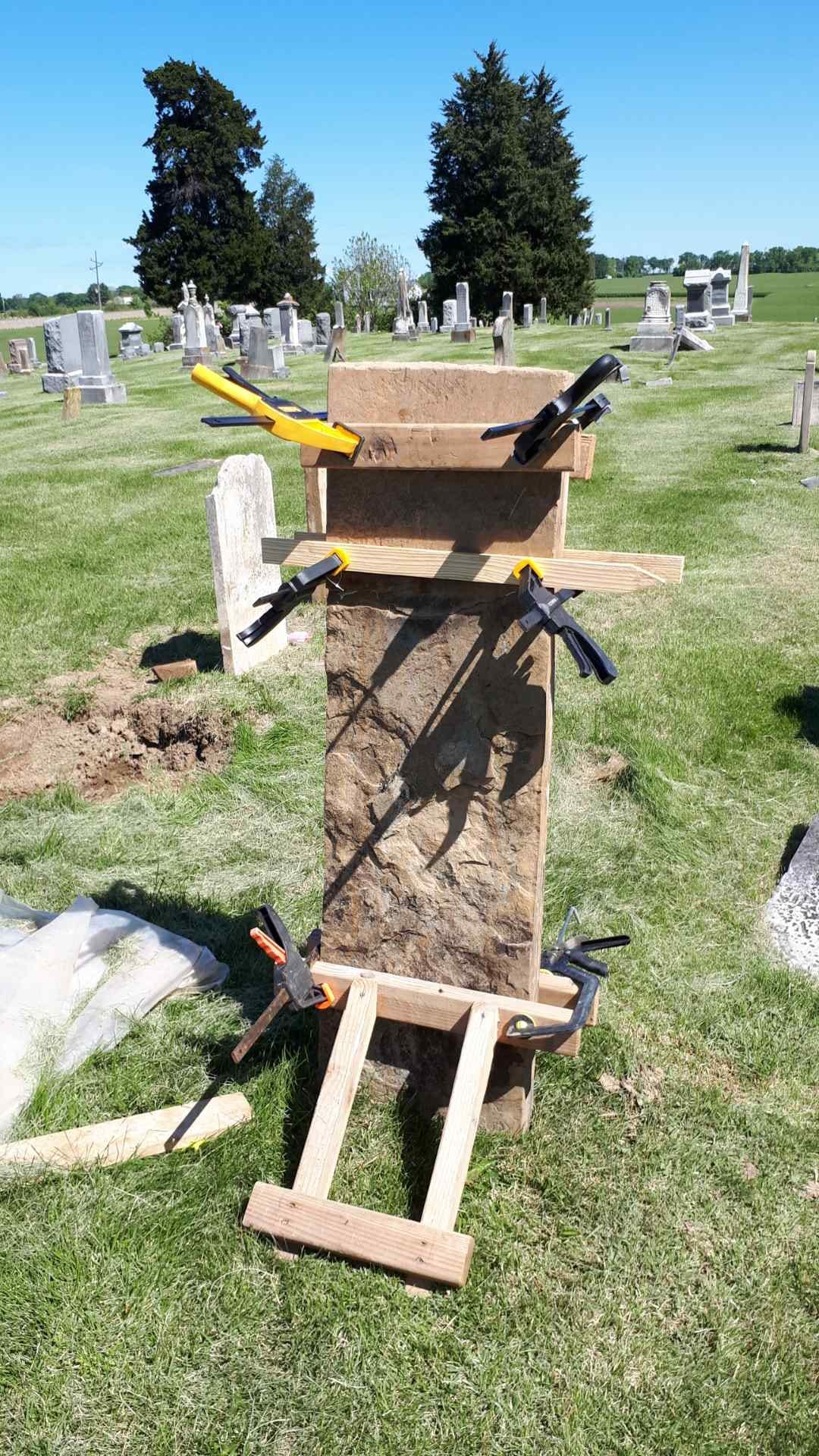
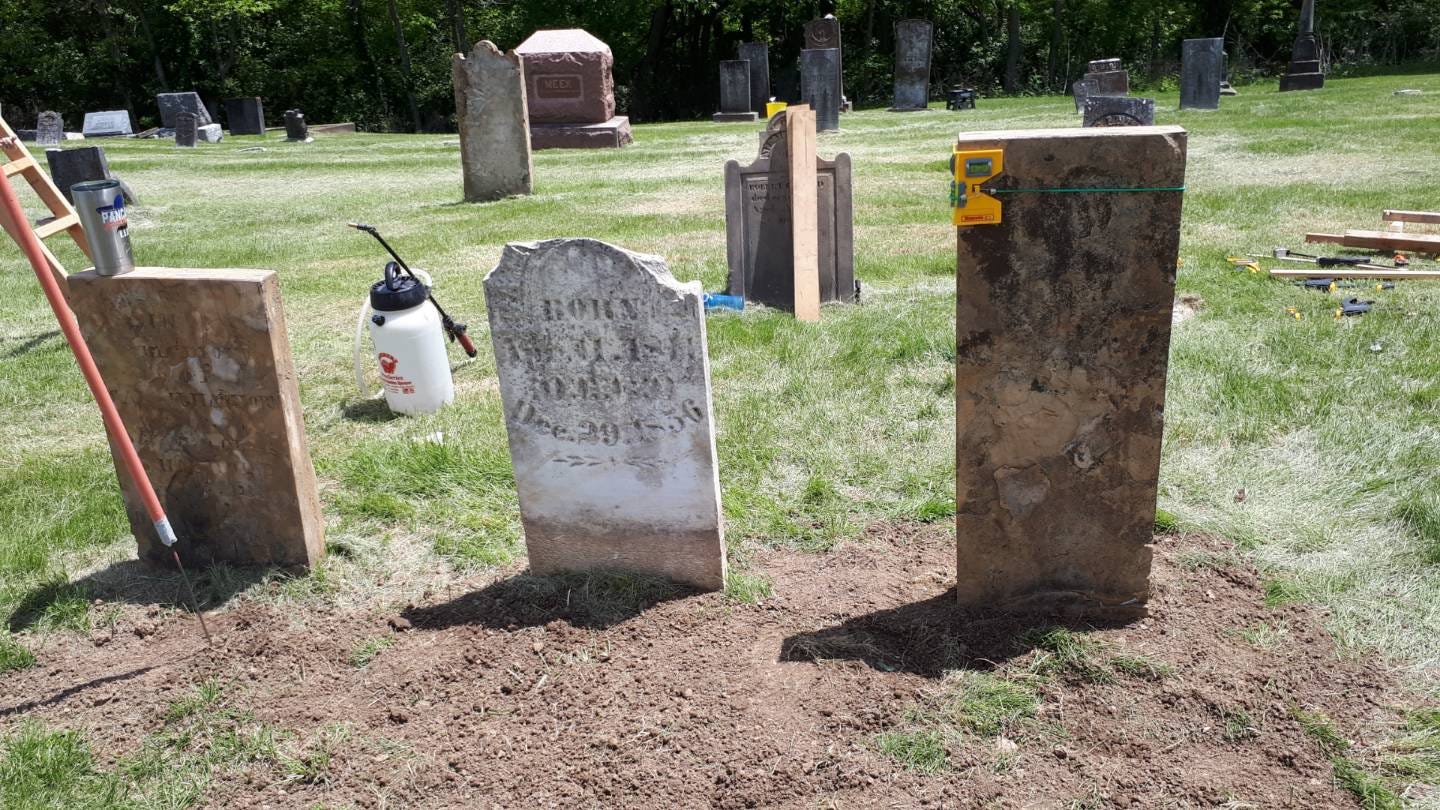
A Trip to The Library.
A fact of historical archaeology is that it is half field work and half library work. And frankly, almost all historical research is conducted in a library. So, off to the library we go! The Sparta Public Library (Sparta, Illinois) has a small genealogical reading room and houses many of the early records of Randolph County. Some of which has been put on microfilm or now internet based databases affiliated with the Latter Day Saints as well as Ancestry and Family Search.
Three informal surveys were conducted of Union Cemetery, one in the 1930s arranged alphabetically, one compilation produced in the 1980s, also alphabetically, but the crown jewel is the 1956 survey conducted by a team led by Mrs. Frank Torrens. Her survey is arranged in geospatial context (mostly) with a last name index. And there on page 2 is the Hawthorn row of markers. Could our mystery marker be for Andrew Jackson Campbell, who died May 6, 1850 at age 35 and 3 months?
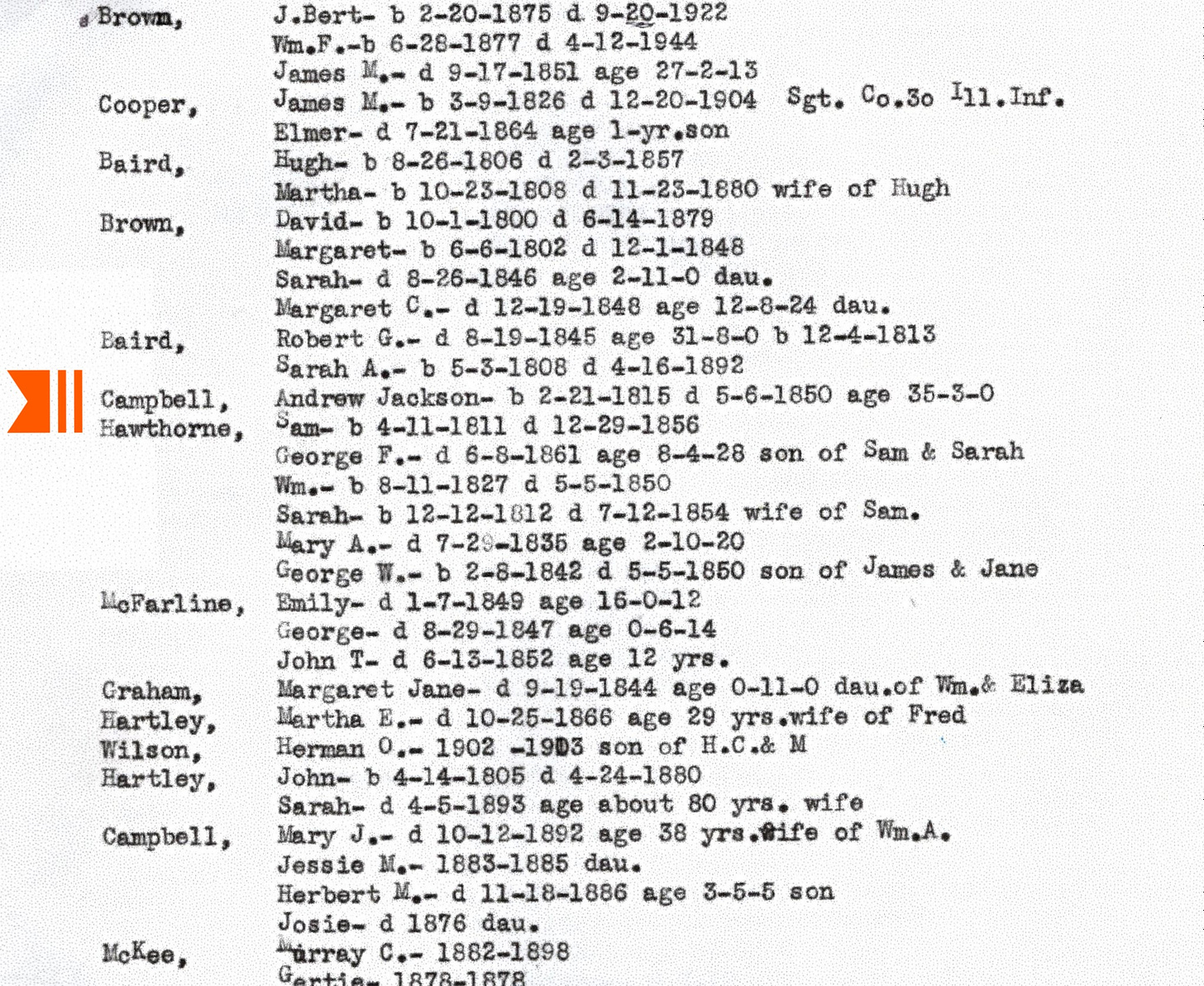
"Excellent! I cried. "Elementary," said he. - Exchange between Dr. Watson and Sherlock Holmes.
We have our man!
With the information from the 1956 cemetery survey, Carole arranged the stone fragments to determine if they could conceivably spell out Andrew Jackson Campbell. And there it was! Fragmented, but clearly the name we were looking for.
Click on the link below for a full biography:
Andrew Jackson Campbell Find A Grave
Dale R. Anderson, Murderpedia.org
The formulae we worked out by trial and error is (H.A.G. + 12 inches) X Width X thickness ÷ 1,728 X 145. H.A.G. is height above ground. 1, 728 is the cubic inches in a cubic foot and 145 is the typical weight in pounds per cubic foot of sandstone.
Read my Substack post, Finding William, Part I for more detail on amateur carver, William Morris (1777-1874)
Under Illinois law, cemetery authorities have wide latitude to maintain, repair and conserve cemetery grounds and monuments. Usually financial limits prevent adequate maintenance, not legal constraints. Abandoned historic cemeteries are another matter however. They are controlled by the State Historic Preservation Officer (SHPO).




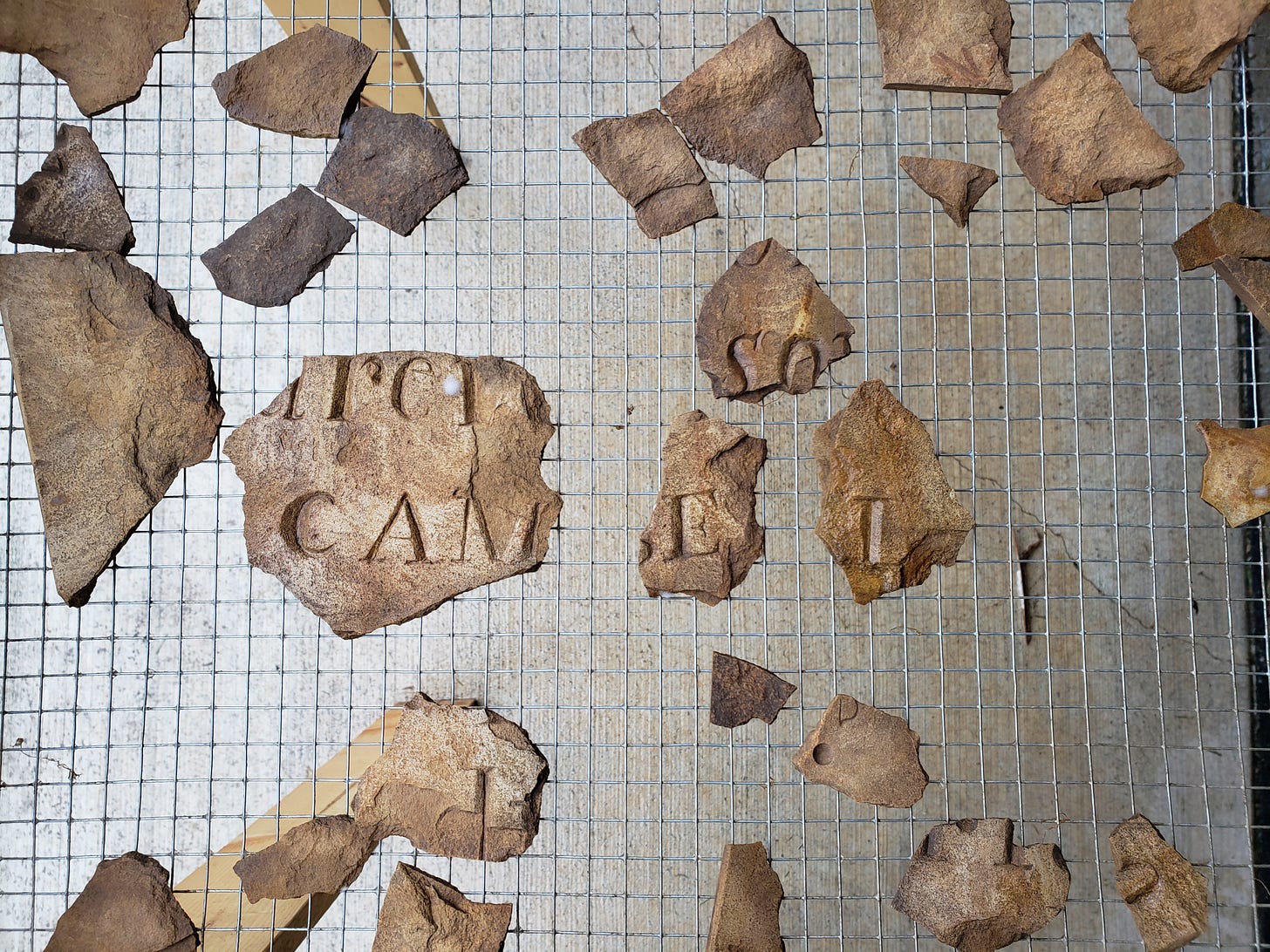
Oh wow, that really WAS a TV drama of "Heritage Hunters"... wait, is that already a thing? Bravo, David. That was great fun. Thank you.
Marvellous to see the gravestone repair and be able to find out the person under the marker. Re the exceptional Torrens survey book - I'm saddened by the many young children listed on that particular page. We are so lucky to have medical prevention & treatment options in this day and age.